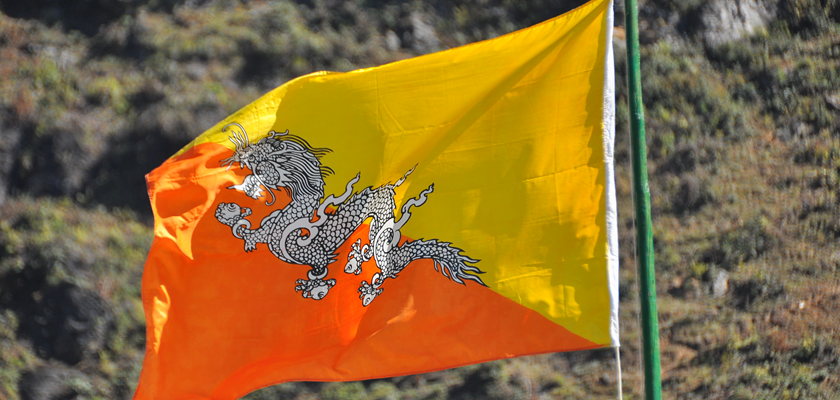" Take nothing but memories, leave nothing but foot prints "
- The Himalayan Kingdom of BHUTAN -History
The name, Bhutan, appears to derive from the ancient Indian term, Bhotanta, which means the end of the land of the Bhots. Bhot was the Sanskrit term for Tibetans; thus, Bhutan could mean the end of the land of Tibet. It could also extend from the Sanskrit word, Bhutan, or high land. No one seems to be sure. Ancient Tibetan writers called their fertile neighbors Lho Mon or Mon Yul, paradise of the south or land of the monpas. The Bhutanese themselves refer to their country as Druk Yul or the land of the peaceful dragon, Druk meaning dragon and extending from the predominant Drukpa school of Tibetan Buddhism.
Bhutan’s history parallels Buddhism’s following in the Himalayas, and to properly understand Bhutan’s history one also needs to understand its religion. Mystery surrounds Bhutan’s distant past, as books and papers were lost in consecutive fires at the National Printing Works and at Punakha Dzong in 1828 and 1832, and then a massive earthquake in 1896 and a fire in Paro Dzong destroyed all but few of the records that outlasted the first disasters. Despite these setbacks, enough reliable information has been recorded to piece together a history, which sets this small kingdom apart from others in its vicinity.
Bhutan was not unified under a central authority until the 17th century; however, the religious presence in the country had been acting as a spiritual cohesion for many years.
It was in 747 AD that Padma Sambhava, who is known as Guru Rinpoche, made his legendary trip from Tibet across the mountains, flying on a tigress’s back. He arrived in the Paro valley at Taktsang Lhakhang, Tiger’s Nest. A monastery now perches precariously on the cliff’s face as a permanent memory to his name.
Guru Rinpoche is the father of the tantric strain of Mahayana Buddhism practiced in Bhutan. His eight manifestations are worshipped throughout the kingdom, and wherever he visited in the kingdom is today a pilgrimage site highly revered by Bhutanese. Guru Rinpoche is not only recognized as the father of the Nyingmapa religious school, but he is also considered to be the second Buddha.
Shabdrung Ngawang Namgyel, a Tibetan lama of the Drukpa school, designed the present system of intertwined religious and secular government. He was invited to Bhutan in 1616. At that time no central authority existed, and regional conflict had persisted intermittently for centuries. In his quest to unify the country, he gained the support of many powerful families of his school and constructed dzongs (fortress monasteries) in the main valleys of western Bhutan. Designed to scare aggressors, the dzongs command a powerful presence over the valleys and remain the center of religious and civil authority.
Shabdrung Ngawang Namgyel fought and won a battle against the Tibetans in 1639 and assumed the title, Shabdrung, meaning “at whose feet one submits.” Later Shabdrung unified the country and established himself as the country’s supreme leader and vested civil power in a high officer known as the Druk Desi. Religious affairs were charged to another leader, the Je Khenpo. The country was divided into regions, and an intricate system of laws was codified. Bhutan’s first Shabdrung died in 1651. Within the five years of his death the country had unified under the control of the central government.
During the next two centuries civil wars intermittently broke out, and the regional Penlops became increasingly more powerful. At the end of the 19th century the Penlop of Tongsa (who controlled central and eastern Bhutan) overcame his greatest rival, the Penlop of Paro (who controlled western Bhutan), and was soon afterwards recognized as the overall leader of Bhutan. An assembly of representatives of the monastic community, civil servants, and the people elected the Penlop of Tongsa, Ugyen Wangchuk, the first king of Bhutan in 1907.
The monarch has thrived ever since, and the present 5th king, His Majesty Jigme Kheser Namgyel Wangchuk commands the overwhelming support of his people.
